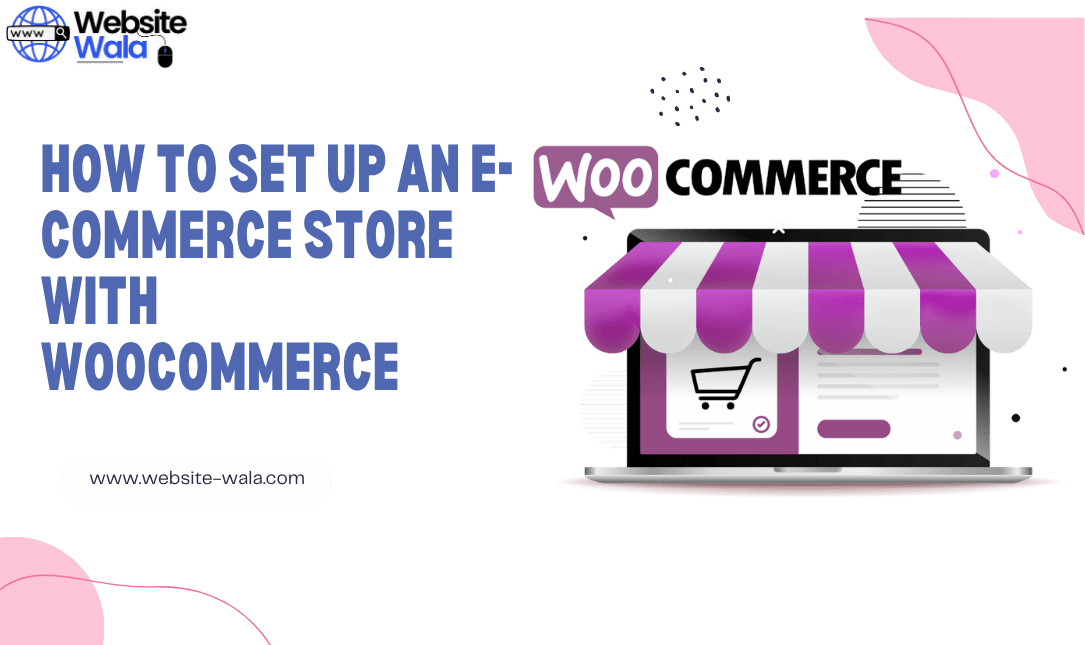
Learn How to Set Up an E-Commerce Store with WooCommerce and launch your online business with seamless product listings, payment gateways, and marketing.
Introduction
If you are looking to start an online business, learning how to set up an E-Commerce store with WooCommerce is a critical first step. WooCommerce, a powerful WordPress plugin, enables entrepreneurs and small business owners to create fully functional online stores without needing advanced coding skills. In this guide, we will walk you through every step of the process—from website creation to store design, product setup, and launching your first online sales.
Why Choose WooCommerce for Your Online Store
WooCommerce is the leading solution for building E-commerce websites due to its flexibility, scalability, and ease of use. By choosing WooCommerce, you can integrate essential features such as payment gateways, shipping options, and marketing tools to grow your online business effectively. Additionally, WooCommerce offers extensive themes and plugins, making store design both professional and customized.
Step 1: Choose a Domain Name and Hosting
The first step in learning how to set up an E-Commerce store with WooCommerce is securing a domain name and reliable hosting. Your domain name represents your brand online, so choose one that is memorable and relevant to your business. Next, select a hosting provider optimized for WordPress and WooCommerce to ensure fast loading speeds and secure transactions.
Step 2: Install WordPress and WooCommerce
After setting up your hosting and domain name, the next step in learning how to set up an E-Commerce store with WooCommerce is website creation with WordPress. Most hosting providers offer one-click WordPress installations. Once WordPress is ready, install the WooCommerce plugin. The setup wizard will guide you through configuring your store design, payment gateway, shipping options, and basic customer service settings.
Step 3: Customize Your Store Design
Your store design plays a crucial role in attracting customers and driving online sales. WooCommerce works seamlessly with WordPress themes, allowing you to select responsive, visually appealing templates. Customize your storefront to reflect your brand’s personality, choose colors, fonts, and layout options that enhance user experience. A professional design builds trust and encourages customers to complete purchases.
Step 4: Add Product Listings
Once your store design is set, it’s time to create your product listings. High-quality images, clear descriptions, and accurate pricing are essential. Categorize products effectively to make navigation easy for customers. Don’t forget to include inventory management settings, product variations, and SEO-friendly titles and descriptions. Proper product listings are key to boosting visibility and online sales.
Step 5: Configure Payment Gateways
A secure payment gateway is critical for any E-commerce store. WooCommerce supports multiple payment options, including PayPal, Stripe, and credit card processing. Ensure your payment system is fully tested before launch to provide a seamless checkout experience. Offering multiple payment gateways also increases trust and flexibility for your customers.
Step 6: Set Up Shipping Options
Next, configure shipping options based on your target market. WooCommerce allows you to set flat rates, free shipping, or real-time carrier rates. Include clear shipping policies and estimated delivery times on product pages. Efficient and transparent shipping enhances customer satisfaction and encourages repeat purchases, which is crucial for long-term online business growth.
Step 7: Optimize for Digital Marketing
Once your online store is functional, focus on digital marketing strategies to attract customers. Utilize social media, email campaigns, and search engine optimization to drive traffic to your site. WooCommerce supports plugins for SEO, analytics, and marketing automation, helping you increase online sales and track your store’s performance.
Step 8: Test Your Store Before Launch
Before officially launching your online store, thoroughly test every aspect. Verify that product listings, payment gateways, and shipping options work correctly. Ensure the checkout process is smooth and customer communications, such as order confirmations, are functioning. Testing ensures a professional and reliable shopping experience for your audience.
Step 9: Launch Your WooCommerce Store
After completing all setup steps, it’s time to launch your E-commerce store. Announce your launch through social media, newsletters, and digital marketing campaigns to maximize visibility. Monitor initial customer interactions and feedback to make necessary improvements. A well-executed launch can set the stage for consistent online sales and long-term growth.
Step 10: Provide Excellent Customer Service
Maintaining a successful online business requires ongoing attention to customer service. Use WooCommerce extensions to manage customer inquiries, returns, and feedback efficiently. Positive customer experiences lead to higher retention rates and word-of-mouth promotion, which are invaluable for expanding your online store.
Conclusion
Learning how to set up an E-Commerce store with WooCommerce empowers entrepreneurs to create a professional, scalable, and profitable online business. By following the steps outlined above—from choosing a domain name to launching your store and optimizing digital marketing—you can confidently start selling online. Focus on quality product listings, secure payment gateways, attractive store design, and excellent customer service to ensure long-term success and sustainable online sales.























